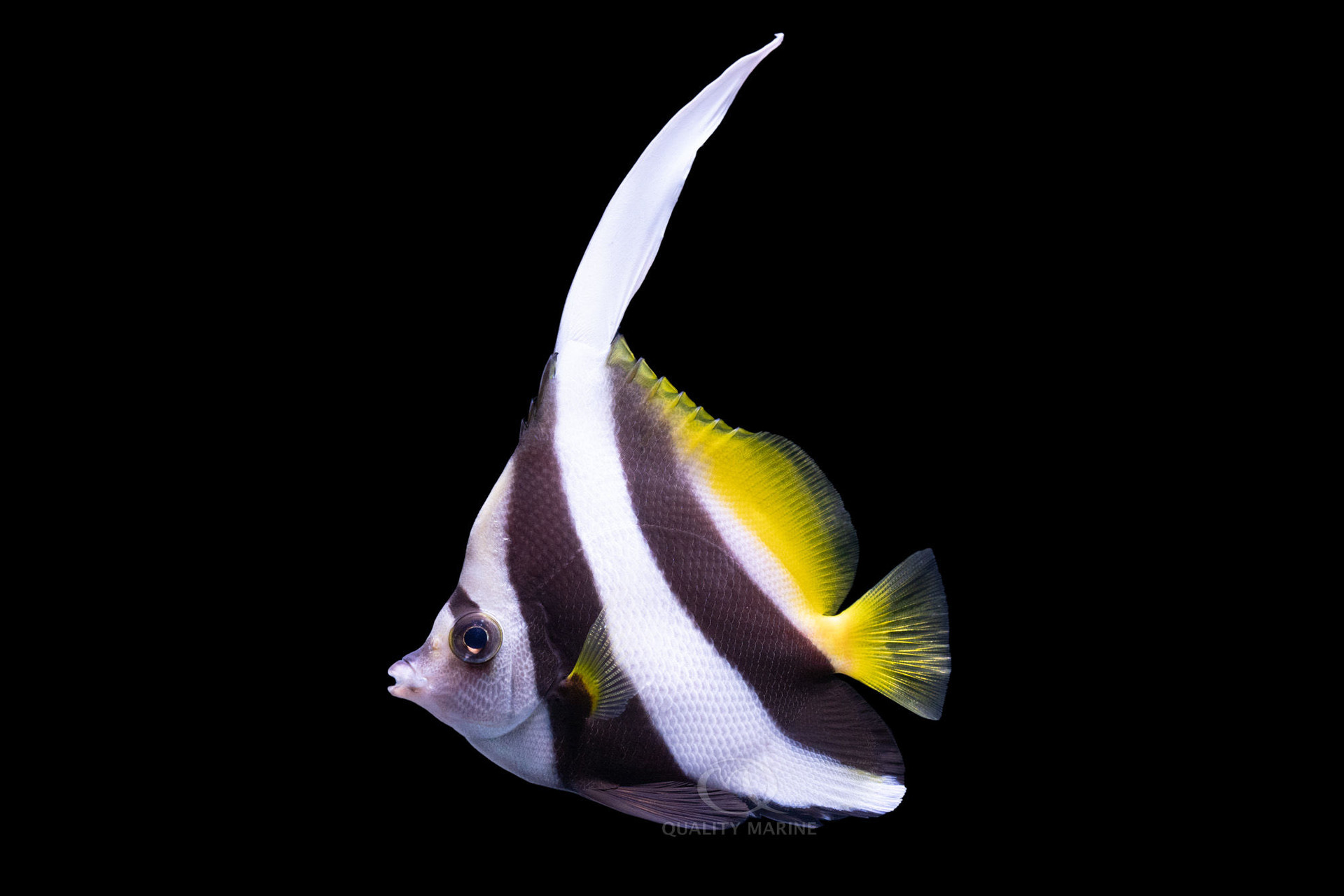Buy This, Not That - Moorish Idols

Zanclus Cornutus is unique in that among English speaking countries, it only has one common name: The Moorish Idol. The unsubstantiated origin story for this name says that the Moors believed them to be harbingers of happiness. The only member of its genus, Z. cornutus is an omnivore from the lowest part of the water column, eating everything from corals and sponges to a wide variety of small motile invertebrates like shrimp. They are usually found singly, in pairs, or very small groups, but are occassionally found in schools up to 100 individuals or so. They are found in nearly every possible tropical and subtropical habitat in the Pacific and Indian oceans; from rubble fields and shallow reefs to seagrass beds and back lagoons, Moorish Idols can make a home there. While the Moorish Idol thrives in a huge variety of environments, one habitat they generally do very poorly in is home aquariums.
There are a myriad of reasons pontificated on regarding this subject. Generally, it is suspected that their wild diet is neigh onto impossible to maintain in the aquarium sizes that possible for the home hobbyist. This being said, some large public aquariums have been able to maintain healthy groups of them for years on end. Regardless, it must be noted that there are other species available to the aquarium enthusiast that offer similar coloration, shape and activity in a much more durable (and affordable!) package. The best two candidates for this version of “BTNT” are the cousins, Heniochus acuminatus and Heniochus diphreutes.
Heniochus acuminatus
The Black & White Heniochus Butterflyfish is also known as Longfin Bannerfish and Pennant Coralfish. The “Pennant” and “Bannerfish” denominations are VERY common among Heniochus genus fish, and frequently replaces the name “Butterflyfish” in their common names. They get this because most of them have a white dorsal filament that streams in the water behind them like a Pennant (and also not unlike the Moorish Idol.)
Like Moorish Idols, Longfin Bannerfish will need a large aquarium at grow out, a 6 foot, 125 gallon tank should be considered the minimum. They are very tolerant of other fish and do best in groups, but be sure to add them all at the same time. Also like the Moorish Idol, H. acuminatus should not be trusted with your corals in a reef aquarium, though some report success keeping them in reef tanks. We do not suggest it.
In the wild, this fish is found in deep outer reef slopes and protected lagoons. Adults are frequently found in pairs and juveniles are found singly. Juveniles have been observed picking parasites off larger fish, both in the wild and in captivity.
Heniochus diphreutes
This fish has been a substitute for so long that its most frequently used common name is “Poor Man's (or False) Moorish Idol.” It is also known as the Schooling Bannerfish, and Pennant Butterflyfish. (See, I told you about the pennant / banner bit). These are extraordinarily difficult to separate from the Longfin Bannerfish by visual cues alone, but the most important difference is that this fish has a slightly shorter snout. Differentiating them is important though as many aquarists recommend this fish for reef tanks, provided they are well fed. As this fish is primarlily a planktivore in the wild, it makes sense that they wouldn't be a high risk for eating your coral. Which is an added benefit over the Moorish Idol.
In the wild, these fish are common through the tropical Indo-Pacific where they form schools both as adults and juveniles, though adults will pair off for breeding season. Both the juveniles and the adults have been observed acting as cleaners on other fish.
Husbandry
Both of these fish are excellent aquarium choices. They are peaceful, beautiful and hardy. They both take prepared foods greedily; we feed them a mix of thawed marine meaty foods and pellets. Standard marine aquarium parameters are perfect: Specific Gravity 1.023 – 1.026, temperature 75–78 degrees F. Both species will need a large (125+) tank at grow out and can be kept in as large a group as the aquarium will allow. They are generally very peaceful with other fish, though some care should be taken when adding fish that look very similar to an aquarium holding established schools.
Heniochus as a genus has many fish that are good choices for captive butterflyfish and some should be on your list. These in particular make excellent substitutes for Moorish Idols based on their colors, shape and activity level. Now go out, hit your Local Fish Store and ask them about Bannerfish from Quality Marine!
https://nas.er.usgs.gov/queries/factsheet.aspx?Spe...
https://www.fishbase.de/summary/Heniochus-diphreut...
https://www.fishbase.se/summary/Heniochus-acuminat...
https://www.fishbase.se/summary/zanclus-cornutus.h...